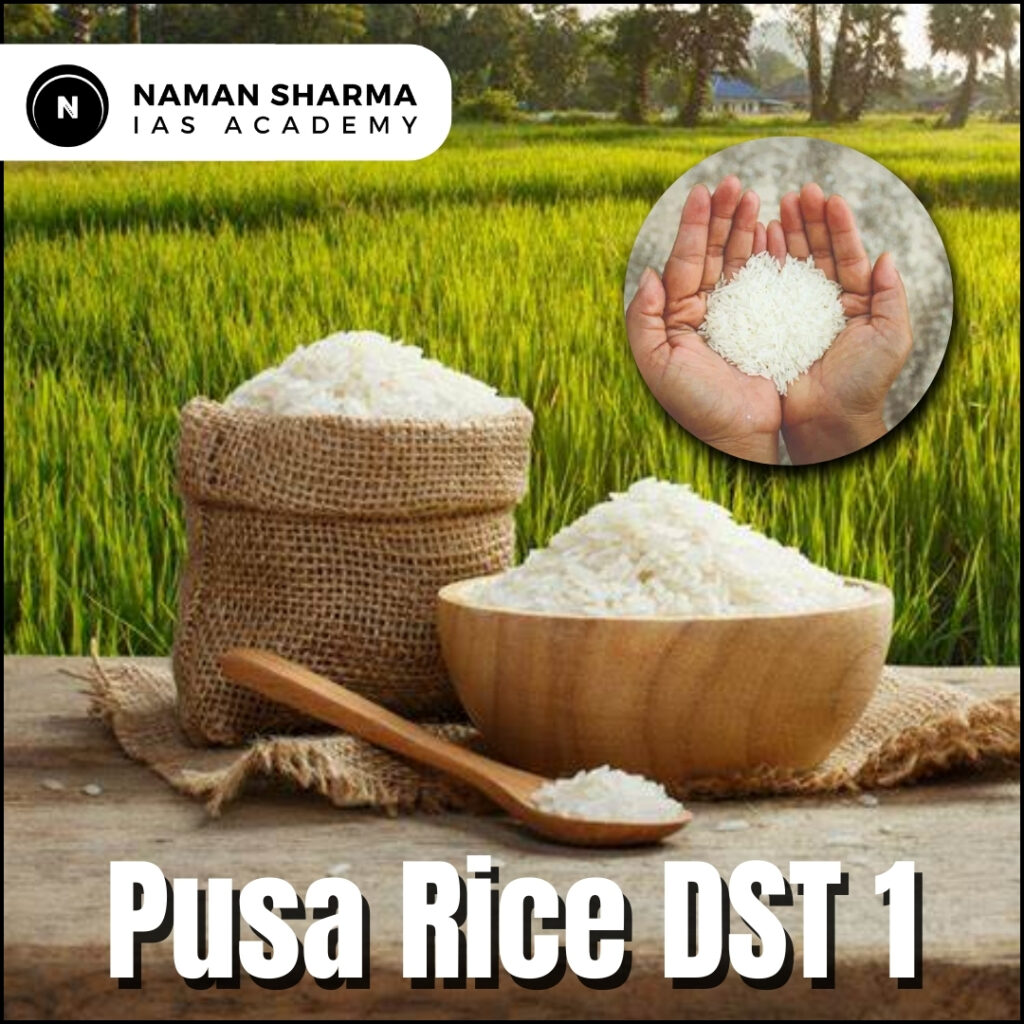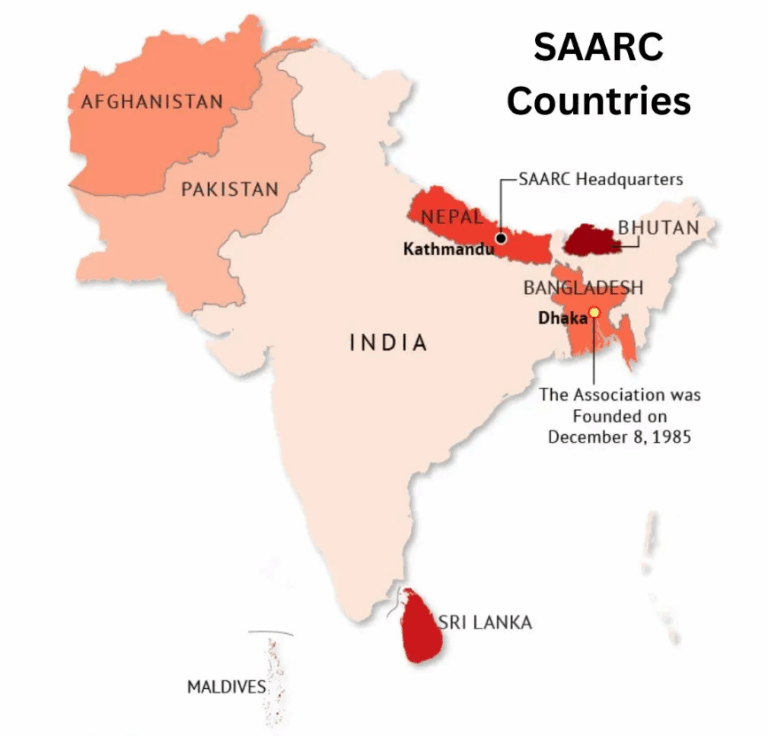Kamala and Pusa DST Rice
Recently, the Union Agriculture and Farmers Welfare Minister has announced the development of two genome-edited rice varieties, marking a new beginning in the field of scientific research and innovation.
Background
- National Agricultural Science Fund: In 2018, ICAR initiated genome-editing research to improve two major rice varieties – Samba Mahsuri and MTU 1010 – under the National Agricultural Science Fund.
- In the 2023-24 budget, the Government of India allocated ₹500 crores for genome editing in crops. ICAR has initiated mega genome editing projects for horticulture crops, animals, fish, and microbes.
About Genome-Edited Rice Varieties
- Developed by: ICAR – Indian Agricultural Research Institute (IARI), New Delhi and the Indian Rice Research Institute (IRRI), Hyderabad
- They are world’s first genome-edited rice varieties, named as – DRR Rice 100 (Kamla) and Pusa DST Rice 1.

About DRR Dhan 100 Kamala
- Developed by: ICAR-Indian Institute of Rice Research (ICAR-IIRR), Hyderabad
- Parent Variety: Samba Mahsuri (BPT 5204),5.37 tonnes/ha (vs. 4.5 t/ha for parent) – 19% increase
- Gene Targeted: Cytokinin Oxidase 2 (CKX2 or Gn1a)
- Technology Used: Site-Directed Nuclease 1 (SDN1) genome editing
- SDN1 uses DNA-cutting enzymes (nucleases) to create a targeted break in the DNA at a specific location.
- Early maturity (~130 days; 20 days earlier than parent)
- Drought tolerance, high nitrogen-use efficiency to 9 t/ha under optimal conditions.
Zones
Andhra Pradesh, Telangana, Karnataka, Tamil Nadu, Puducherry, Kerala (Zone VII), Chhattisgarh, Maharashtra, Madhya Pradesh (Zone V), Odisha, Jharkhand, Bihar, Uttar Pradesh, West Bengal (Zone III).
About Pusa DST Rice 1
- It was developed from MTU1010 and is a ‘salinity tension tolerant’.
- When cultivated in areas that have a national average of salinity, the new variety produced 66% additional yield than MTU1010. Similarly, in alkaline conditions, the new variety gave 66% more yield than its original and under ‘salinity tension’ conditions, the yield of the new variety was 30.36%.

Technique involved
- These new varieties were developed using genome-editing technology based on CRISPR-Cas, which makes precise changes in the organism’s genetic material without adding foreign DNA.
Not a GM Crop
- Current genome technology involves using living organisms from native crop species (known as SDN 1 and SDN2 types of genome editing) to enhance productivity and achieve desired results, rather than incorporating alien organisms or bacteria.
- The two new varieties incorporate no foreign DNA, so they are not genetically modified (GM).
- Hence, these varieties are exempt from the biosafety regulations outlined in Rules 7-11 of the 1989 Environment (Protection) Act. (Rules 7-11 of the Environment (Protection) Act, 1989, primarily regulate the manufacture, use, import, export, and storage of hazardous microorganisms and genetically engineered organisms or cells. These rules are in addition to the main Environment (Protection) Act, 1986. They address the need for careful supervision and control over activities involving genetic engineering to ensure public health and environmental safety.
PRELIMS PRACTICE QUESTIONS:
Questions: About DRR Dhan 100 (Kamala) and Pusa DST Rice 1, recently developed genome-edited rice varieties in India, consider the following statements:
- Both varieties were developed using Site-Directed Nuclease 1 (SDN1) genome editing involving the insertion of foreign DNA.
- DRR Dhan 100 (Kamala) is an early-maturing variety developed from Samba Mahsuri, targeting the CKX2 gene.
- Pusa DST Rice 1 shows a significant yield advantage under saline and alkaline soil conditions compared to MTU1010.
- These genome-edited varieties fall under genetically modified organisms (GMOs) and are strictly regulated under Rules 7-11 of the Environment (Protection) Act, 1989.
Which of the statements given above is/are correct?
A. 2 and 3 only
B. 1, 2 and 4 only
C. 3 only
D. 1 and 4 only
Answer: A
Explanation:
- Statement 1 is incorrect: SDN1 does not involve the insertion of foreign DNA.
- Statement 2 is correct: DRR Dhan 100 is developed from Samba Mahsuri, targeting CKX2.
- Statement 3 is correct: Pusa DST Rice 1 shows 66% yield improvement under saline/alkaline stress.
- Statement 4 is incorrect: These are not GMOs and are exempt from Rules 7-11.
MAINS PRACTICE QUESTION:
Question: The development of DRR Dhan 100 (Kamala) and Pusa DST Rice 1 marks a milestone in Indian genome-editing research. Critically evaluate how the use of SDN1 and CRISPR-Cas technologies in these varieties redefines the regulatory framework of biotechnology in India(150 Words, 10 Marks).







